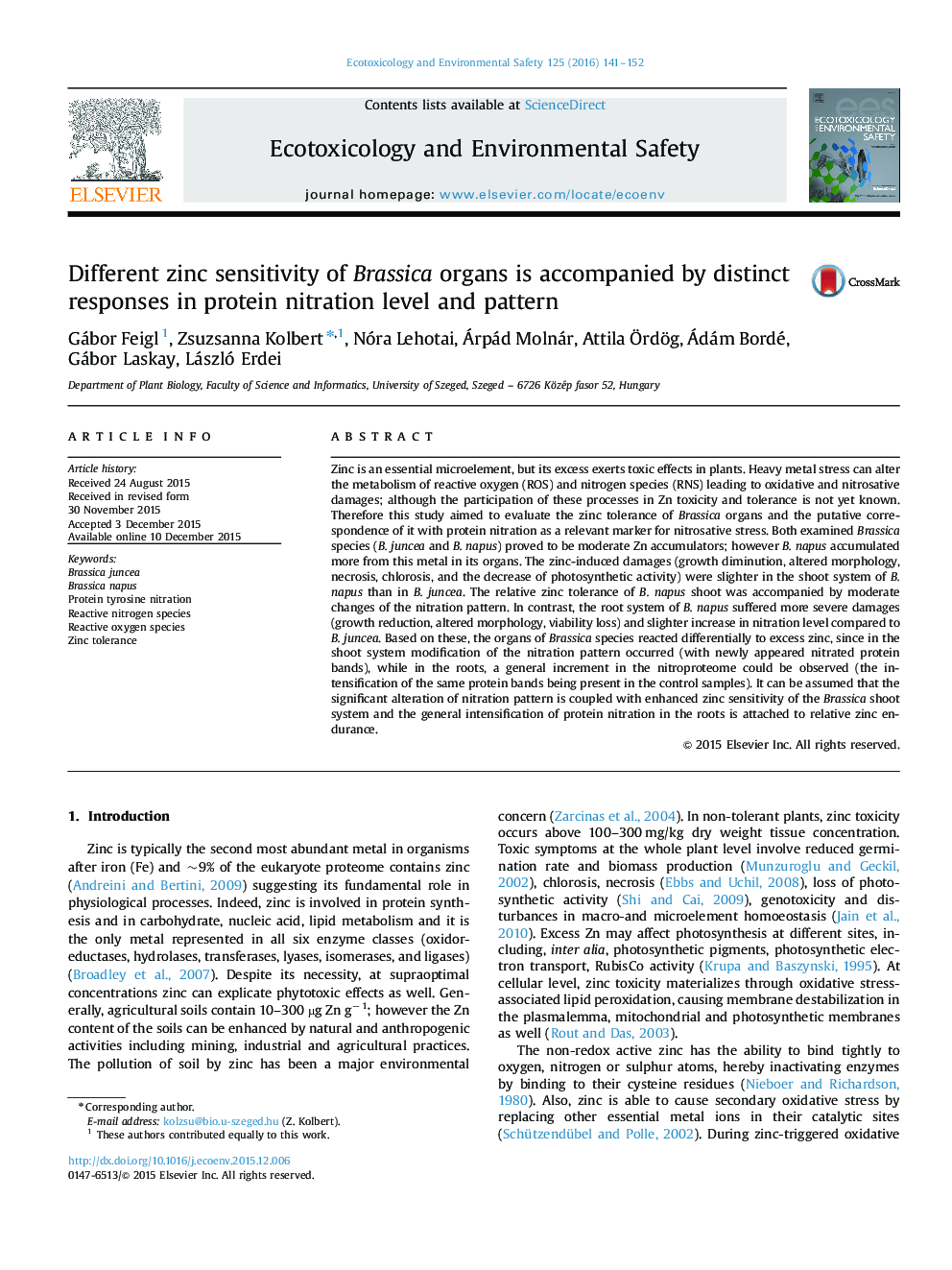| Article ID | Journal | Published Year | Pages | File Type |
|---|---|---|---|---|
| 4419451 | Ecotoxicology and Environmental Safety | 2016 | 12 Pages |
•We examined the effect of zinc excess in the roots and leaves of two Brassica species.•B. napus accumulated more zinc in its organs.•The organs of Brassica species reacted differentially to excess zinc.•In the shoot system modification of the nitration pattern occurred.•In the roots, a general increment in the nitroproteome could be observed.
Zinc is an essential microelement, but its excess exerts toxic effects in plants. Heavy metal stress can alter the metabolism of reactive oxygen (ROS) and nitrogen species (RNS) leading to oxidative and nitrosative damages; although the participation of these processes in Zn toxicity and tolerance is not yet known. Therefore this study aimed to evaluate the zinc tolerance of Brassica organs and the putative correspondence of it with protein nitration as a relevant marker for nitrosative stress. Both examined Brassica species (B. juncea and B. napus) proved to be moderate Zn accumulators; however B. napus accumulated more from this metal in its organs. The zinc-induced damages (growth diminution, altered morphology, necrosis, chlorosis, and the decrease of photosynthetic activity) were slighter in the shoot system of B. napus than in B. juncea. The relative zinc tolerance of B. napus shoot was accompanied by moderate changes of the nitration pattern. In contrast, the root system of B. napus suffered more severe damages (growth reduction, altered morphology, viability loss) and slighter increase in nitration level compared to B. juncea. Based on these, the organs of Brassica species reacted differentially to excess zinc, since in the shoot system modification of the nitration pattern occurred (with newly appeared nitrated protein bands), while in the roots, a general increment in the nitroproteome could be observed (the intensification of the same protein bands being present in the control samples). It can be assumed that the significant alteration of nitration pattern is coupled with enhanced zinc sensitivity of the Brassica shoot system and the general intensification of protein nitration in the roots is attached to relative zinc endurance.
